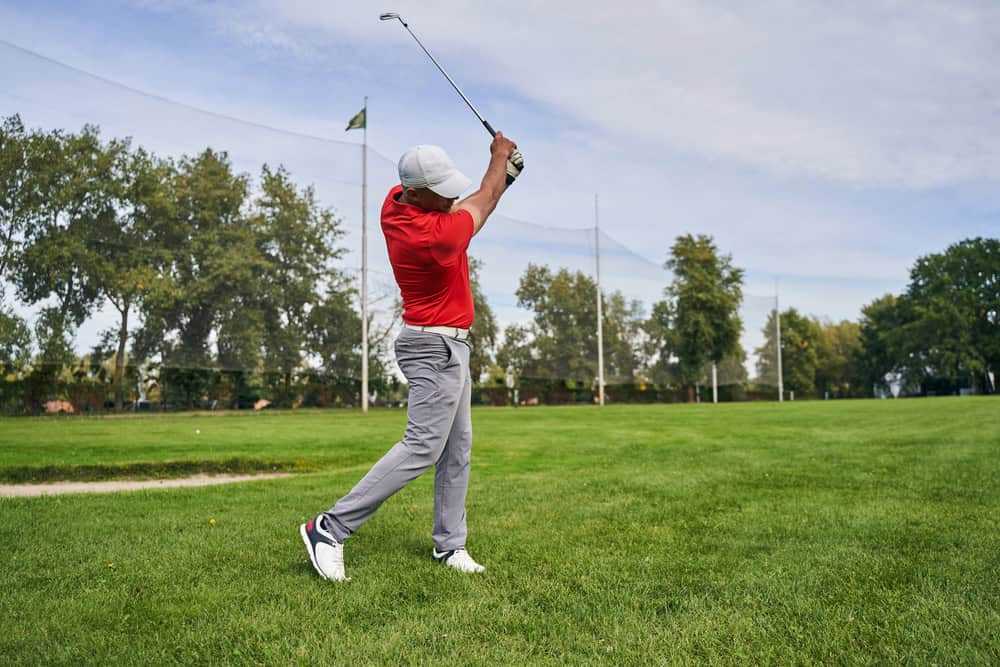
Understanding how to start the downswing in golf is critical for achieving consistent and powerful ball striking. Many golfers, especially those in their later years, struggle with timing and body mechanics during the downswing.
Yet, this part of the swing is where your power and accuracy can shine. It’s the shift from the backswing to the downswing that separates good golfers from great ones. By improving your downswing, you can hit longer, more accurate shots without relying on excessive strength or expensive equipment.
In this article, we will break down what starts the downswing in golf and how you can initiate this critical part of the swing to improve your game. Let’s dive into the sequence that will help you increase distance, reduce inconsistency, and hit more greens in regulation.
The Importance of Sequence in the Downswing
The sequence of movements in the downswing is the foundation of a great golf swing. The most successful players follow a natural rhythm, where the lower body starts the downswing and the upper body follows. The timing and pressure shifts determine how effectively you generate clubhead speed and maintain control through the impact zone.
By understanding the basic sequence of events, you will be able to make a more controlled and powerful downswing. Start by focusing on your body’s movement patterns and how to shift your weight properly.
Establish Proper Arm Structure at the Top
Before you can start the downswing, it is important to have good arm structure at the top of the backswing. Many golfers tend to swing their arms separately from their bodies, which can lead to a loss of power and inconsistent shots. Keep your arms connected with your body as you complete the backswing, and think about keeping your elbows close together. This creates a solid base to begin your downswing.
If you keep your arms in sync with your torso during the backswing, it will be much easier to transition smoothly into the downswing. This connection will help keep your body and arms working together rather than against each other.
Shift Pressure to Your Lead Foot
One of the key movements in how to start the downswing in golf is the shift in pressure. As you finish the backswing, your body weight should naturally be on your trail foot (right foot for right-handed golfers). Before the downswing begins, the pressure should quickly shift to your lead foot (left foot for right-handed golfers).
This pressure shift triggers the rest of the downswing chain. Your lower body begins the motion, which then drives the upper body and arms into the correct positions. If you fail to shift pressure properly, your downswing may become erratic, leading to poor timing and inconsistent shots.
Start the Downswing with Your Hips
The downswing sequence starts from the ground up, with the hips leading the movement. Many golfers mistakenly try to move their arms first or swing their hips too aggressively. The key to a smooth and powerful downswing is allowing your hips to rotate slightly before your arms begin moving.
As the hips rotate toward the target, the torso and arms naturally follow, guiding the club on the correct path. This coordinated movement results in a shallow, powerful angle of attack, allowing the club to make solid contact with the ball. The sequence ensures a consistent, controlled swing, maximizing both accuracy and distance.
Initiate the Downswing with a Slight Hip Bump
To further reinforce the importance of the hips, you should feel a slight bump in your lead hip as you begin the downswing. This move shifts your weight onto your lead foot while maintaining your posture. The slight bump sets the hips in motion, and as the hips move forward, they create space for the arms to drop into the proper position.
By focusing on this small but significant movement, you’ll prevent your upper body from prematurely leading the downswing. The timing of the hip bump ensures that the rest of your body follows in sync, resulting in better shot consistency.
Rotate the Hips Before Moving Your Arms
As you start the downswing, your lower body should rotate first. The arms follow, but they should not initiate the movement. Moving your arms before your hips will result in an “over the top” swing, which leads to steep angles and inconsistent ball striking.
Let your hips lead the downswing, allowing your arms to drop naturally as your torso rotates. This seamless transition sets up a shallow angle of attack, ensuring the club stays on the proper swing plane. By focusing on this movement, you’ll achieve a more consistent and powerful strike, improving both accuracy and distance.
Tuck Your Trail Elbow
One of the key components of a proper downswing is tucking your trail elbow. As your lower body leads the movement, your trail elbow should move closer to your body. This helps drop the club onto the correct path, creating a shallower angle and preparing you to strike the ball with power and precision.
A well-timed elbow tuck is essential for proper sequencing. This ensures that the club is in a favorable position at impact, leading to a cleaner, more consistent strike.
Keep Your Lead Shoulder Down
A common mistake golfers make during the downswing is lifting the lead shoulder, which causes the body to stand up out of posture and results in a steep angle of attack. To maintain the proper downswing path, it’s critical to keep the lead shoulder down as your trail arm works under it.
This allows the club to stay on the correct plane, helping you strike the ball cleanly and with more power. Keeping the lead shoulder down also ensures you stay in your posture, which is crucial for making solid contact.
Wrist Hinge and Lag for Maximum Power
As the downswing progresses, your wrists should naturally hinge in a bowing motion. This wrist hinge, or lag, is essential for creating power and delivering the clubhead to the ball with maximum speed.
By maintaining lag until the last possible moment, you will be able to generate more clubhead speed and hit the ball farther. The correct wrist action is a key element of a successful downswing, and it all starts with a proper lower body movement.
The Role of Proper Golf Swing Training
Understanding the key elements of the downswing is a great start, but applying these principles to your swing requires practice and feedback. One effective way to build a proper downswing is through consistent golf swing training. Improve your swing at Berman Golf and develop a more efficient, powerful swing.
At Berman Golf, we specialize in helping golfers of all ages and skill levels improve their biomechanics and increase their clubhead speed. Our tailored training programs focus on developing proper movement patterns to optimize your downswing and enhance your game.
Unlock Your Best Downswing with Berman Golf
Mastering how to start the downswing in golf requires a solid understanding of biomechanics and a consistent practice routine. The good news is, Berman Golf is here to guide you every step of the way. We focus on improving your body’s movement to help you generate more power and control through your downswing. With personalized training and expert guidance, you can take your game to new heights and enjoy the game longer.
Contact us today to learn more about how we can help you improve your downswing and overall golf performance. Let us help you build a stronger, more consistent game that lasts for years to come.

Dr. Jake Berman

Latest posts by Dr. Jake Berman (see all)
- Why Is My Golf Swing So Inconsistent? Causes And Fixes - November 15, 2025
- How Far Down Should You Grip The Golf Club? A Grip Guide - November 10, 2025
- Driver Vs. Irons: Golf Swing Differences Explained - November 5, 2025

